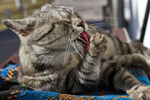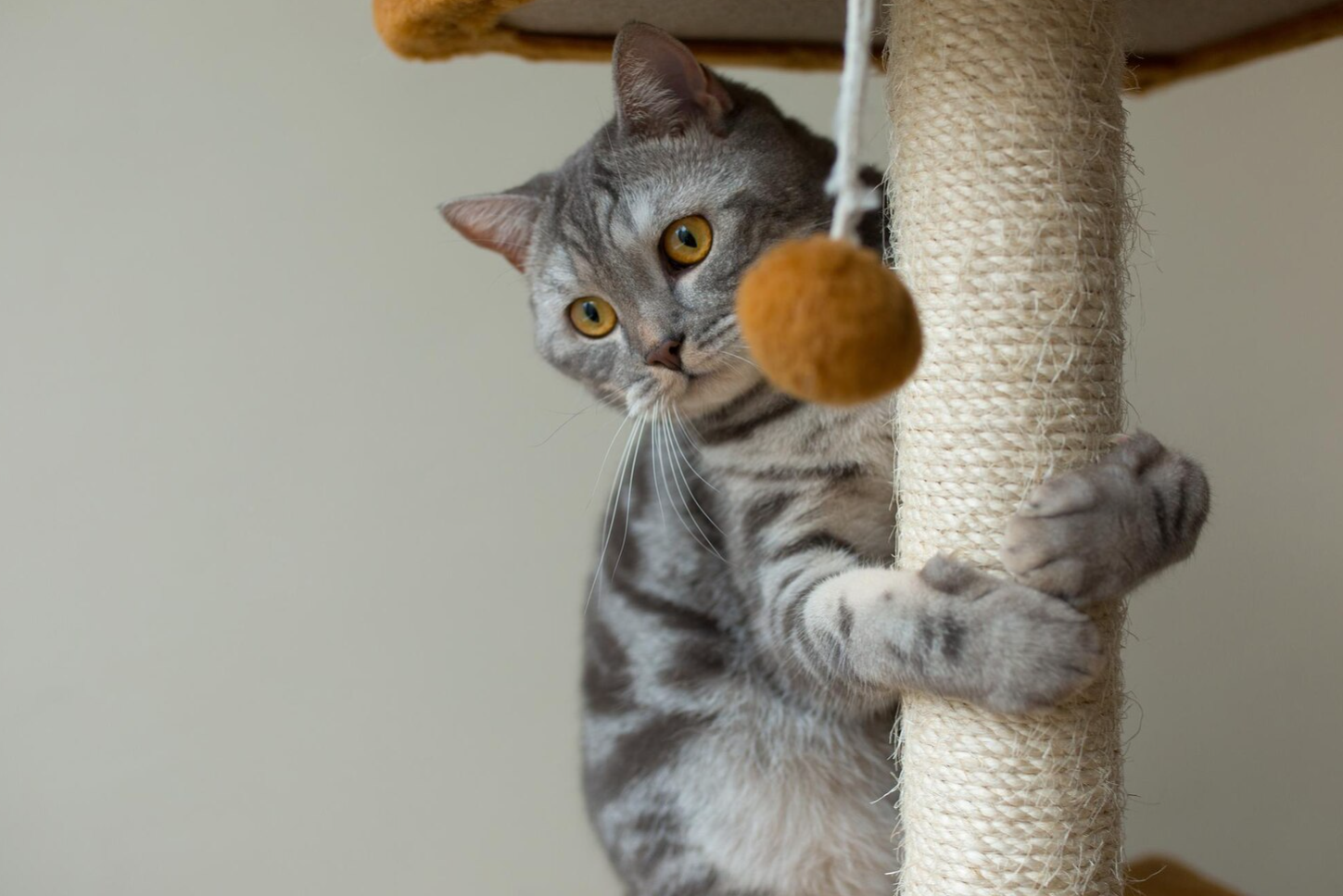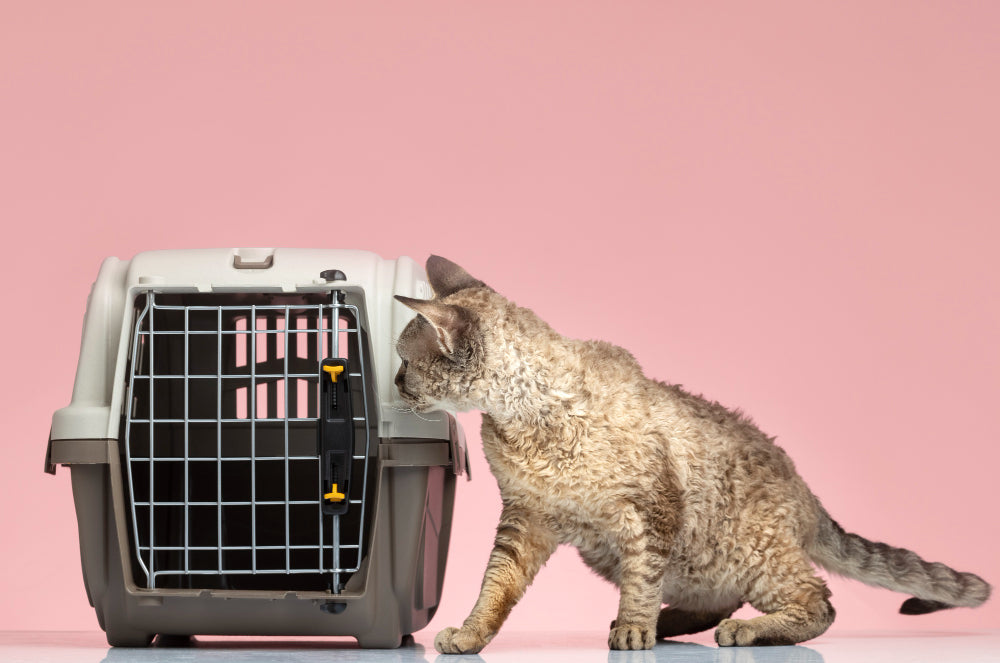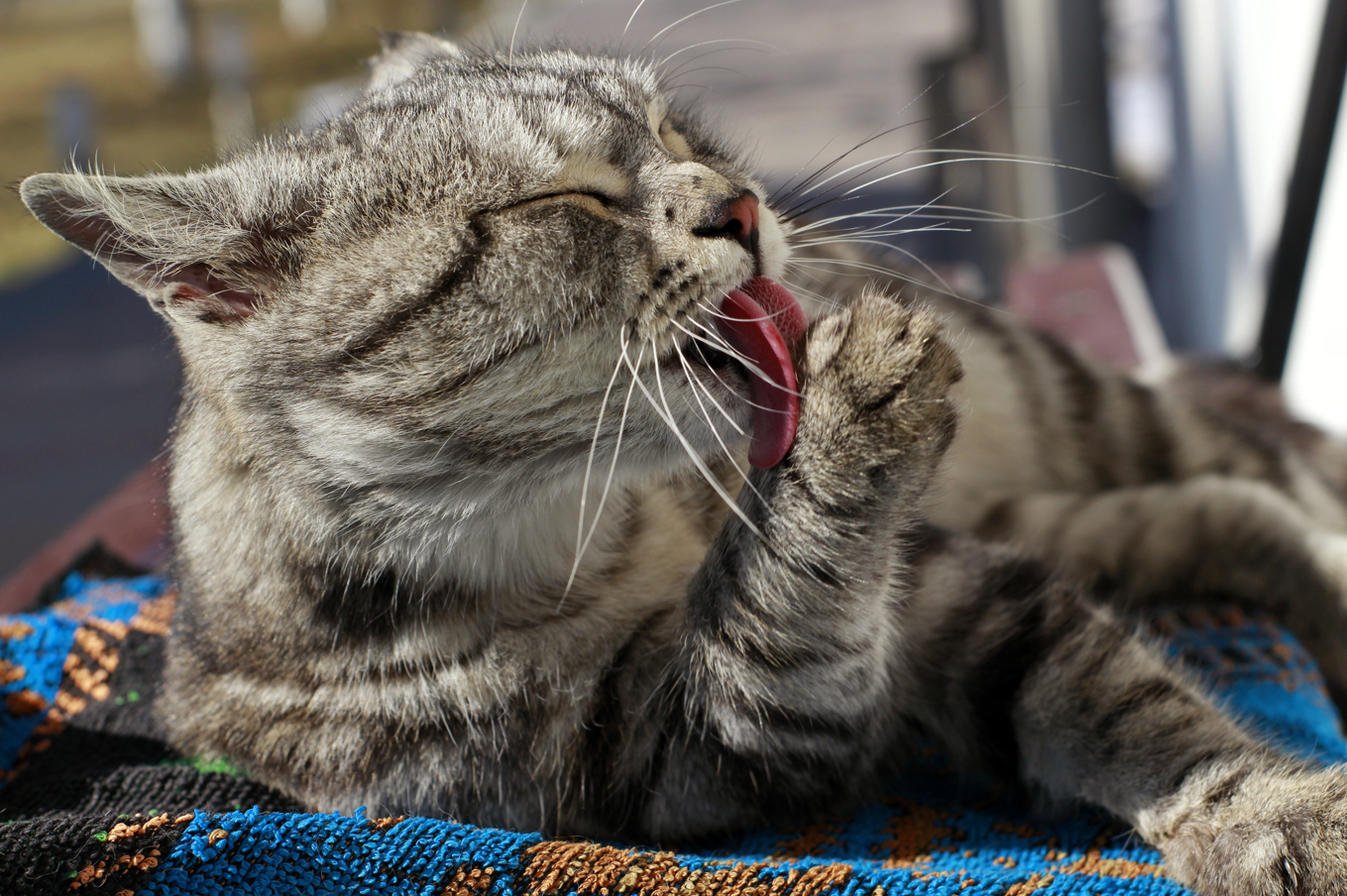
Why your cat suddenly licks one spot so much (and what you can do about it yourself first)
, by Michael van Wassem, 4 min reading time

, by Michael van Wassem, 4 min reading time
A cat grooming itself is normal. A cat fixating on one specific spot —always the same side of the belly, paw, base of the tail, or flank—is not. Excessive licking of one area is rarely "just grooming"; it's almost always a sign of something. Please note, we are not veterinarians. If you have any doubts or concerns, always contact your veterinarian immediately.
In this blog you can read:
why cats exhibit this behavior,
what the most common causes are,
and what you can do at home first before rushing to the vet.
Cats don't meow when they're uncomfortable or in pain — they prefer to handle things silently themselves . Licking is their "self-help method" for:
Relieve itching
Masking pain
release tension or let off steam
Keep wounds clean.
Sooth irritation
However, licking often makes the area redder, more bare, and more sensitive , creating a cycle. The fact that you see it usually means it's been going on for a while.
A reaction to food, dust, fleas, pollen, detergent, artificial grass, new clothing, etc. The skin itches → the cat licks → the skin becomes further irritated.
Flea bites, mites, or ticks are often the culprit behind sudden licking, especially at the base of the tail and flanks. You often won't even see the flea itself.
For example, a bruise, an old fall, joint pain, or early-stage arthritis. Cats will lick precisely over the source of pain as if they want to "clean it away".
Moving, renovations, a new baby, a dog staying overnight, a new pet in the house, a disrupted routine — stress manifests in cats as repeated licking behavior. Often the belly, inner paws, or flanks.
A scratch, a bite from outside, a burn from the stove, rough carpet, an ingrown hair... Small in cause, big in consequence as soon as it's licked.
That increases stress and reinforces the behavior. Don't correct it — address the cause.
Is there something new in the house: new laundry detergent, new rug, new scent, other cats, renovation, overnight guests? Often the "trigger" is not on the cat but 2 meters away.
Soften, cool, or soothe the skin instead of trying to stop the licking. A calm skin licks less — no cat stops by being forbidden.
Cats alternate between licking and scratching; shorter nails reduce skin damage.
Time of day, location in the house, situation (after eating? after stress? only at night?). This is worth its weight in gold if you later have to go to the vet.
Don't "wait and see" in these cases:
There is bare skin or an open area.
the place is getting bigger
Licking suddenly becomes extremely intense.
There is red, hot, or moist skin.
Cat is eating less / is quieter than usual.
you suspect pain instead of itching
The sooner you go, the less often a cat will ultimately need a cone, antibiotics, or pain relief.
"My cat suddenly licks one spot a lot" isn't just strange behavior—it's information . A cat communicates without words. Not responding means missing what it's clearly telling you. If in doubt, always contact your veterinarian first.
The trick isn't: stopping the licking.
The trick is: solve the root cause .
Check out all of Fidello's cat care products here for a happy cat.


